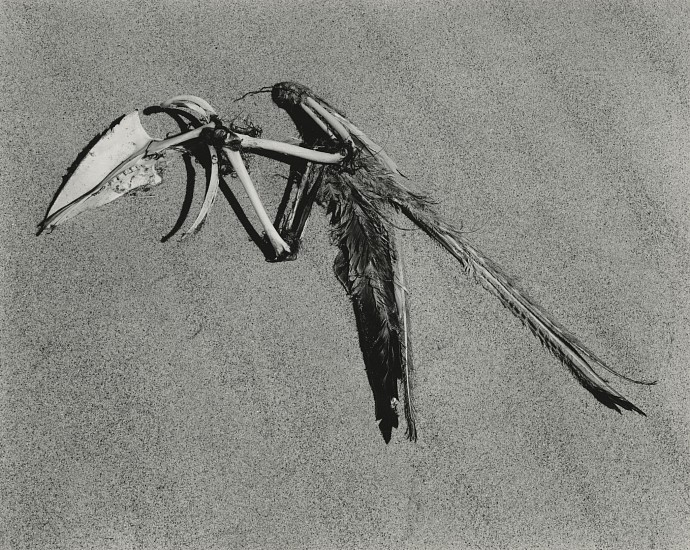Edward Weston


Edward Weston, Bird Skeleton, Oceano, California, 1936
Vintage gelatin silver print, 7 1/2 x 9 1/2 in. (19.1 x 24.1 cm)
Mounted to 15 x 15 1/2 board; signed with negative "22B" in pencil on mount verso.
2599
$18,000
Illustrated: Conger, Amy. Edward Weston: The Form of the Nude. Phaidon Press, New York 2005, fig.959. Mora, Gilles [Ed.]. Edward Weston: The Forms of Passion. Abrams Press, New York 1995, p.224.
Provenance: Weston traded to Frederic Sommer for drawing by Sommer; gift from Sommer to previous owner.
Sommer and Weston
Many of us typically think of death as the end of life; something to be buried, hidden, and observed with solemn reverence. There are plenty of cultures however, that view death as a part of life, a transitional moment to be celebrated, visually represented, and marked by gracious, even grateful reflection. This is, perhaps, a helpful reminder when looking at these two photographs of dead animals by two very different photographers who were both giants in the field.
Sommer’s approach to photography and indeed all art-making was provocative and spiritual, interested in teasing out meaning from everything around us. Weston’s approach was almost clinical, elevating the everyday to monumental status through careful, technical visual description. While the subjects of these two photographs is in name at least, the same (animal remains) the difference between the photographers suggests separate motivations for making each picture; motivations that the pictures themselves bear out.
Weston, for example, has taken great care to isolate the skeletal remains of a bird on a field of tightly speckled sand, which forms a ready-made greyscale against which the sun-bleached bones and dry feathers are silhouetted. The dark shadows beneath the remains emphasize the sculptural qualities of the remains, declaring their status as something that is, not something that was. By contrast, Sommer’s image is as inquisitive as Weston’s is declarative. Instead of a clear division of surface and object, Sommer’s rabbit dissolves into its surroundings as if in the process of transitioning back to the land. True to form, Sommer seems interested here in the ongoing nature of things, forcing us to think about the thin lines between life, death, and earth.
See the Sommer


